Tennessee is not merely a state — it is a song written in three verses. From the blue ridges of the east to the flat delta plains of the west, it holds the melody of America’s heart. Its beauty unfolds like a ballad: sometimes quiet and yearning, sometimes brimming with rhythm and light.
In the Great Smoky Mountains, dawn rises like a hymn, mist curling through ancient valleys where time seems to fold upon itself. In Middle Tennessee, the land softens — rolling pastures and rivers cradle the creative pulse of Nashville, the city that gave voice to country music’s dreams. And to the west, the air thickens with history and soul. Memphis, on the Mississippi’s edge, still hums with the echo of Elvis, B.B. King, and the birth of rock ’n’ roll.
But Tennessee is not defined only by sound — it is also shaped by silence: the hush of forests, the stillness of Civil War fields, the peace of small towns where front porches lean toward twilight. It is a state that holds its contradictions tenderly — sacred and profane, modern and old-fashioned, celebratory and mournful, all at once.
To travel through Tennessee is to move through layers of American identity — from the pioneer trails of the Cumberland Gap to the neon glow of Broadway in Nashville. It is a journey through the nation’s history of hardship and hope, and through the enduring power of art to redeem it all.
Here is a state that sings — not just through guitars and gospel choirs, but through its landscapes, its stories, and the warmth of its people.
Nashville: The City That Sings

In Nashville, sound is the air itself. The city hums with rhythm — from the honky-tonks of Broadway to the quiet reverence of the Ryman Auditorium, where every chord still seems to linger. Known as Music City, Nashville’s magic lies in its dual nature: equal parts myth and work ethic, glamour and grit.

At the heart of it all is the Country Music Hall of Fame, a cathedral of sound chronicling the legends who shaped America’s soundtrack — from Hank Williams to Dolly Parton. Yet just beyond the tourist bustle, Nashville’s neighborhoods reveal the city’s evolving soul. In East Nashville, creativity spills from every café and mural-covered alley; in The Gulch, modern architecture mingles with industrial past.

The Cumberland River curves through the city like a melody line, reflecting bridges and neon signs in its surface. By night, the skyline glows — a testament to Nashville’s energy, faith, and artistic drive. It’s a place where dreamers arrive with guitars slung over their shoulders, chasing stories that often begin in small clubs but sometimes end in immortality.
Nashville isn’t just the capital of country music; it’s the capital of reinvention. It’s where tradition and ambition harmonize — and the music never really stops.
Memphis: The Birthplace of the Blues
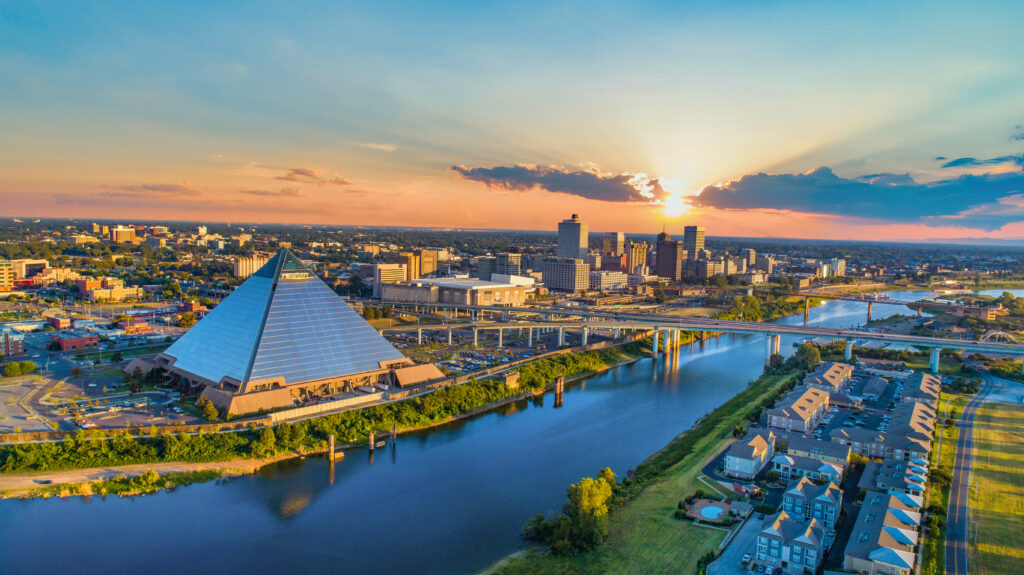
If Nashville is a song of dreams, Memphis is a hymn of soul. Perched on the Mississippi’s edge, it is the city that gave America its rhythm. The heartbeat of Beale Street still carries the echo of saxophones and foot-tapping blues; it’s the sound of resilience born from hardship and joy entwined.

In Sun Studio, Elvis Presley recorded the sessions that would change the world. B.B. King played the blues that became universal language. And at Stax Records, gospel met rhythm in a sound that defined a generation. Memphis is history and heartache in equal measure — a city that remembers.

At the National Civil Rights Museum, built into the Lorraine Motel where Dr. Martin Luther King Jr. was assassinated, the air is heavy but holy. The exhibits here tell not only of suffering but of progress — the unbroken thread of hope that defines the South at its best.

Evenings bring barbecue smoke and laughter. The scent of hickory and sauce rises from riverside diners, while steamboats drift past under a coppery sunset. Memphis reminds every visitor that the soul of America isn’t found in its triumphs alone, but in its struggles, and in the songs that rose from them.
The Great Smoky Mountains: Tennessee’s Timeless Heart

In the Great Smoky Mountains, time has its own rhythm. Mornings arrive in silver mist, spilling down through valleys where wild rhododendron blooms and black bears wander in quiet grace. This vast expanse — a UNESCO World Heritage Site and America’s most visited national park — feels almost sacred.

The mountains rise like old gods, their peaks softened by age and rain. Clingmans Dome, the state’s highest point, offers sweeping views across a sea of ridges that seem to roll forever. Trails wind past waterfalls like Laurel Falls and Grotto Falls, and the sound of rushing water becomes the park’s heartbeat.
In towns like Gatlinburg and Pigeon Forge, rustic charm meets nostalgia: craft stores, moonshine distilleries, and the ever-playful energy of Dollywood, the theme park dreamed up by Tennessee’s beloved daughter, Dolly Parton. Yet even amid its popularity, the Smokies retain their solitude — a place where fog cloaks ancient forests and Cherokee legends whisper through the trees.
The Smoky Mountains are Tennessee’s oldest story — written in stone, river, and cloud. Here, one feels the pulse of something eternal, something that outlasts every sorrow and every song.
Chattanooga: The City Between Mountains and River

Cradled between the Appalachian foothills and the winding Tennessee River, Chattanooga is a city that has remade itself from a place of industry into a hymn to the outdoors. Once known as the “Dynamo of Dixie,” it now hums with a different kind of energy — creative, green, and endlessly alive.
The Walnut Street Bridge, one of the longest pedestrian bridges in the world, spans the river like an emblem of renewal. Cyclists and musicians fill it with sound, and at sunset, it glows against the purple folds of Lookout Mountain. The Tennessee Aquarium anchors the revitalized riverfront, offering a glimpse into the region’s natural soul — river otters, sturgeon, and shimmering schools of native fish.

But Chattanooga’s greatest treasure is its geography. From the summit of Lookout Mountain, the view stretches across seven states — a panorama of forests, valleys, and cloudlight. Beneath it, Ruby Falls cascades through the earth like a secret kept for centuries, while the Incline Railway crawls up impossibly steep tracks to the mountain’s crest.
By evening, the city lights flicker along the river, and the air hums with live music drifting from open doors. Chattanooga is a reminder that the South’s heart beats not only in memory, but in renewal — in the way beauty returns, and communities reinvent themselves with grace.
Knoxville: Between Mountains and Melodies
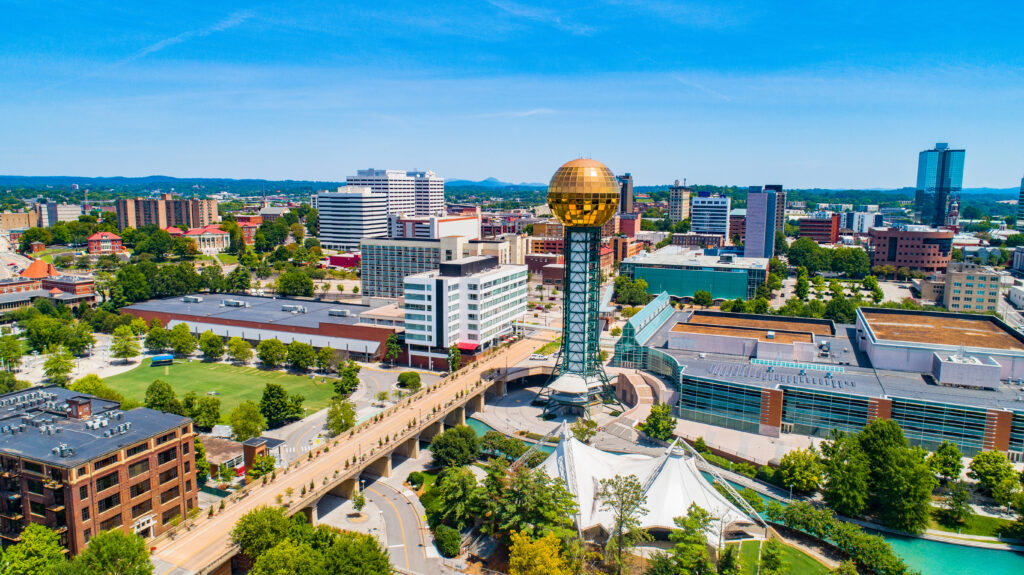
Where the Smoky Mountains begin to fold into the Tennessee Valley, Knoxville stands as both a gateway and a gathering place. It is a city defined by its blend of old-world charm and university vitality — the home of the University of Tennessee, and a quiet cultural gem in its own right.
Downtown Knoxville’s Market Square thrums with life — outdoor cafés, local art galleries, and the sound of buskers strumming guitars beneath brick façades. The Old City, once a rough industrial quarter, has become a creative haven of breweries, bookstores, and live-music halls. Every May, the Big Ears Festival transforms Knoxville into a world stage, where jazz, folk, and experimental music mingle beneath the shadow of the mountains.

For history lovers, James White’s Fort, built in 1786, tells the story of Knoxville’s frontier beginnings. Nearby, the Tennessee Theatre — an opulent movie palace from the 1920s — remains one of the most beautiful in the South, its gilded ceiling glimmering like starlight.
Knoxville’s greatest strength lies in its balance: it’s both urbane and unhurried, cultured yet grounded. From its riverside trails to its thriving music scene, the city reflects the Tennessee spirit at its most authentic — quietly proud, endlessly creative, and deeply connected to the land it calls home.
Franklin: Where History Still Walks the Streets

Just south of Nashville lies Franklin, a town that feels as though time has slowed its pace to match the rhythm of footsteps on cobblestones. With its lovingly preserved downtown, Civil War history, and lush countryside, Franklin is one of Tennessee’s most graceful places — a living testament to memory and renewal.

Along Main Street, Victorian façades house independent bookstores, antique shops, and cafés where locals linger over coffee. There’s an unmistakable sense of continuity here — families who’ve lived in the area for generations, musicians who seek quiet between tours, and visitors drawn by the town’s blend of history and Southern gentility.
Franklin’s past runs deep. The Battle of Franklin, fought in 1864, was one of the Civil War’s bloodiest engagements, and the scars it left are preserved at Carnton Plantation, The Carter House, and Lotz House — sites where stories of courage and tragedy still echo. Yet Franklin has turned remembrance into reflection, its community rooted in both reverence and resilience.
In the evenings, music drifts from hidden courtyards, and the air smells faintly of magnolia and old wood. The countryside beyond town — rolling farmland and winding roads — feels timeless. Franklin is Tennessee distilled: the harmony of past and present, sorrow and beauty, melody and peace.
Lynchburg: The Spirit in the Barrel

In the heart of south-central Tennessee, Lynchburg seems suspended in another era — a small town wrapped in hills, with a courthouse square and a name known far beyond its size. For this is the home of Jack Daniel’s, the oldest registered distillery in the United States, where whiskey making is not just a business, but an act of faith.
Visitors to the Jack Daniel’s Distillery follow the path from cool limestone springs to the charcoal mellowing vats, where the scent of sweet mash fills the air. The process is deliberate, slow — much like life in Lynchburg itself. Each drop of whiskey carries the mineral taste of the local water, filtered through sugar maple charcoal, and aged in barrels that breathe with the Tennessee seasons.

The town around it feels almost cinematic — a handful of shops, a general store, and a rhythm as steady as the ticking of a clock. The Moore County Courthouse, standing proudly in the square, reminds you that tradition still matters here. On Saturdays, locals gather for barbecues and bluegrass, the air thick with hickory smoke and laughter.
Lynchburg is a place where craft becomes culture — where patience, pride, and a hint of rebellion are distilled into something golden and enduring. It’s not just about the whiskey; it’s about the American art of doing one thing perfectly, and never rushing it.
Bristol: The Birthplace of Country Music

Straddling the Tennessee–Virginia line, Bristol is a city literally divided by a street — and united by a sound. It was here, in 1927, that the Bristol Sessions were recorded, capturing for the first time the raw poetry of Appalachian music. From those humble beginnings came legends like The Carter Family and Jimmie Rodgers, and the birth of what the world would soon call country music.
Today, that legacy is preserved at the Birthplace of Country Music Museum, a luminous, modern space where visitors can listen to the crackle of old recordings and feel the pulse of history. Yet Bristol is no relic. The sound still lives here — in street festivals, live bars, and jam sessions that spill out onto State Street, where one half of the sidewalk lies in Tennessee, the other in Virginia.
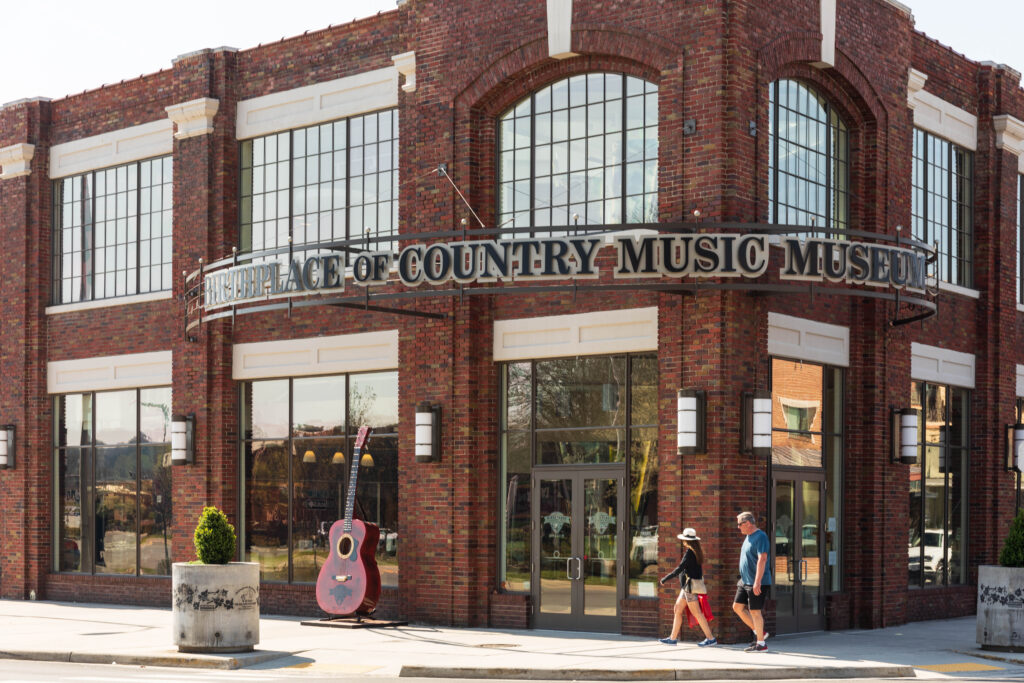
Beyond its musical fame, Bristol offers quiet beauty. The South Holston Lake shimmers nearby, a sanctuary for kayakers and fishermen. The surrounding hills, lush with forests, hold small farms and winding trails that still hum with the same melodies that once echoed through mountain hollows.
In Bristol, music isn’t merely entertainment — it’s an inheritance, a way of remembering who you are. Each guitar strum seems to say: this is where the American song began.
Clarksville: The River City’s Renaissance

Perched on the banks of the Cumberland River, Clarksville blends military heritage, artistic ambition, and small-town charm. Once a frontier post and later a tobacco hub, it has become one of Tennessee’s fastest-growing cities — though it hasn’t lost its sense of heart.
Downtown Clarksville, with its red-brick streets and vintage storefronts, feels welcoming and walkable. The Roxy Regional Theatre, a beacon of community culture, has been telling stories on stage for nearly a century. Meanwhile, murals bloom on alley walls, and cafés spill out onto sidewalks alive with music and laughter.
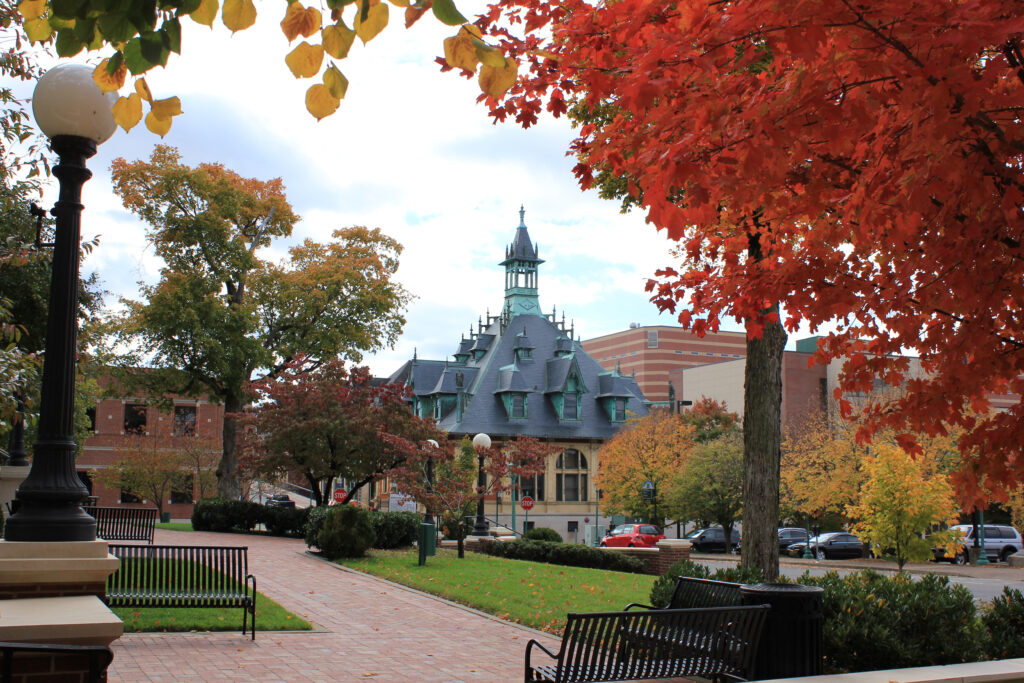
The nearby Austin Peay State University infuses the town with youthful energy, while Fort Campbell, just a short drive away, anchors it in history and service. The Cumberland Riverwalk offers peaceful paths and river views, especially magical at dusk when the water catches fire with sunset colors.
Clarksville embodies Tennessee’s spirit of transformation — a place that looks back with pride but moves forward with purpose. It’s both frontier and future, the kind of city that welcomes you like an old friend, yet keeps surprising you long after you’ve arrived.
Johnson City: The Gateway to the Blue Ridge
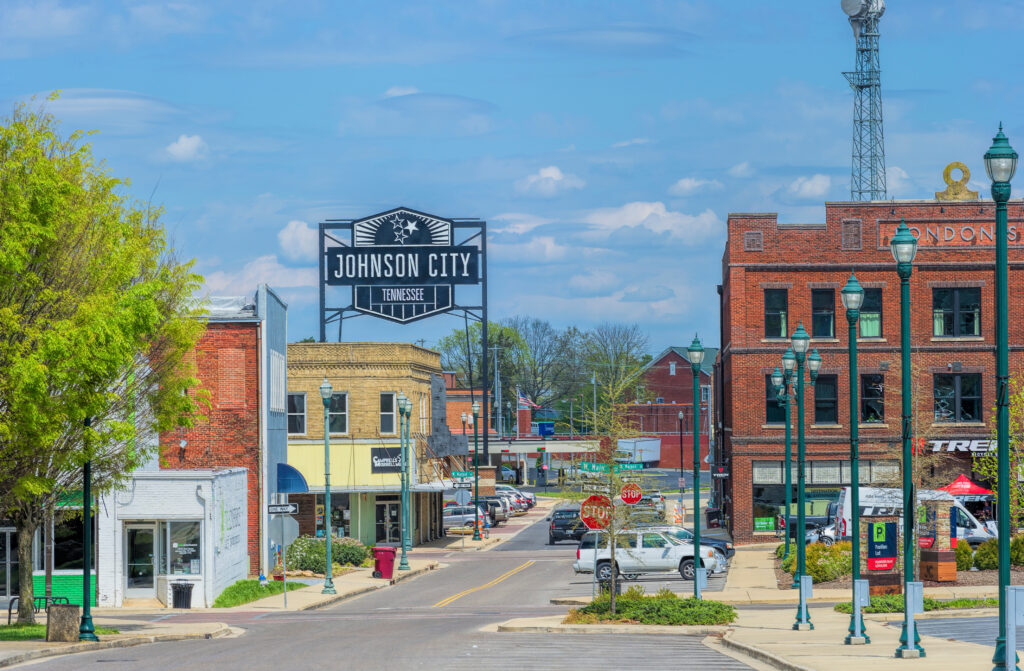
In the far northeastern corner of Tennessee, Johnson City rests at the foothills of the Blue Ridge Mountains, where the ridges rise like soft waves and the air carries the scent of pine and rain. Long known as a railroad town, Johnson City has blossomed into a cultural and outdoor haven — a place where mountain traditions and modern energy coexist with easy grace.
The city’s Founders Park and King Commons have become gathering grounds — spaces alive with farmers’ markets, concerts, and the laughter of children splashing in fountains. The nearby East Tennessee State University infuses the area with youthful creativity, particularly through its Bluegrass, Old-Time, and Country Music Studies program, which honors and renews the mountain music born in these hills.

Adventure lies just beyond town. The Appalachian Trail winds through the nearby forests, while Buffalo Mountain Park offers panoramic views of the city nestled below. In autumn, the hills burn with gold and scarlet, and every backroad feels like a painting come to life.
Johnson City carries a quiet authenticity — a reminder that the true Tennessee spirit thrives not only in its cities of fame, but in its mountain towns of heart and heritage. Here, the music feels closer to the earth, and life moves to a rhythm that never rushes.
Columbia: Mule Town with a Musical Soul

South of Nashville, surrounded by fertile farmland and limestone creeks, lies Columbia — affectionately known as “Mule Town.” Its nickname harks back to the 19th century, when Columbia was a center of mule trading, a heritage still celebrated each April during the boisterous Mule Day Festival, complete with parades, music, and barbecue that fills the air with smoke and laughter.
Yet Columbia is far more than its tradition. Its historic downtown has become one of the most charming in the South — lined with boutiques, vintage stores, and eateries that celebrate both local flavors and Southern hospitality. The Maury County Courthouse, standing proudly in the center, anchors a town that has managed to modernize without losing its soul.
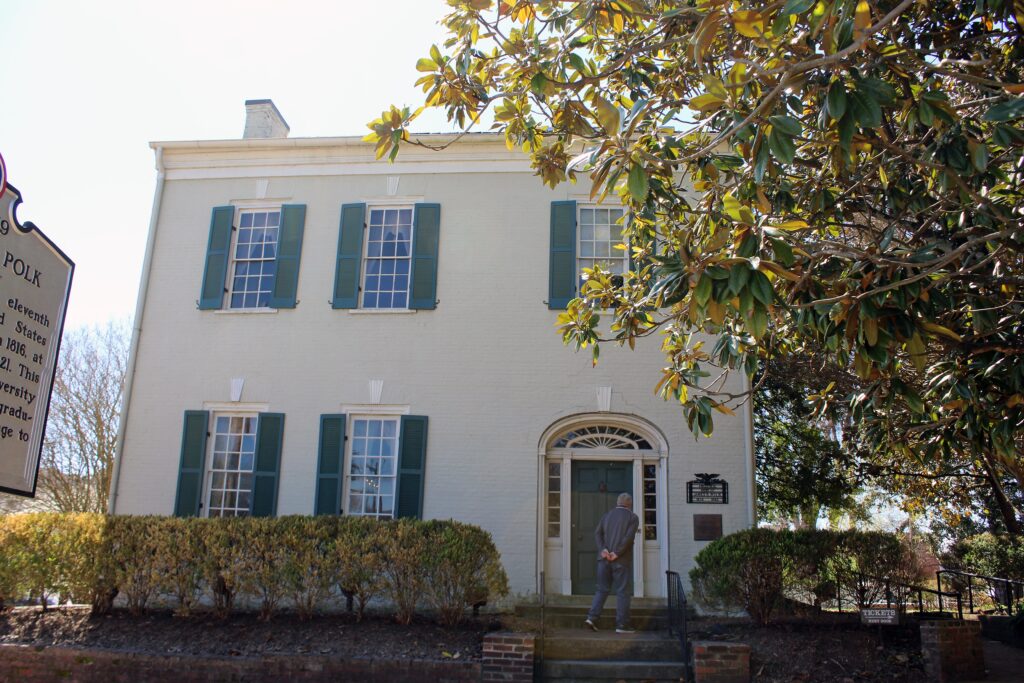
Music has found a home here, too. Muletown MusicFest and the town’s thriving arts scene have turned Columbia into a creative outpost for songwriters and artists seeking inspiration outside of Nashville’s bustle. Nearby, the President James K. Polk Home and Museum connects the town to national history, preserving one of Tennessee’s presidential legacies.
Columbia is the kind of place that feels lived in and loved — a community stitched together by heritage and heart. Whether you come for the music or the mules, you leave with the feeling that you’ve touched a piece of the real South.
Cookeville: The Heart of the Highlands
Tucked amid the Upper Cumberland Plateau, Cookeville feels like Tennessee’s best-kept secret — a blend of college-town vibrancy, mountain-town charm, and small-city creativity. It’s a place defined by balance: between nature and culture, tradition and progress.

At its center lies Tennessee Tech University, whose campus anchors the town’s youthful energy and artistic flair. Downtown Cookeville radiates friendliness — galleries, local breweries, and farm-to-table restaurants line its streets, while the Cookeville Depot Museum recalls the railroad days that first gave this town life.

But step just beyond the city and the wilderness opens wide. Burgess Falls State Park boasts cascades plunging through green ravines, while Cummins Falls — one of the state’s most beloved natural swimming holes — invites summer visitors into its cool, clear waters. Hiking trails and quiet overlooks abound, offering solitude only minutes from the city’s heartbeat.

Cookeville embodies Tennessee’s quiet confidence: it doesn’t shout for attention, yet it earns admiration through its warmth, beauty, and authenticity. It’s a place that feels both grounded and full of possibility — a reminder that the most memorable destinations are often those that make you feel at home the moment you arrive.
Jackson: The Soul of West Tennessee

Between Nashville and Memphis lies Jackson, a city with one foot in the Delta and the other in the highlands, where gospel choirs and guitar licks have long intertwined. It is a crossroads in every sense — musical, historical, and cultural — and it carries the deep, soulful character of West Tennessee like a familiar tune.
Casey Jones Village, named for the legendary railroad engineer, celebrates the state’s spirit of bravery and motion, while the International Rock-A-Billy Hall of Fame pays homage to the region’s rollicking, rebellious contribution to early rock ’n’ roll. Jackson was once home to Carl Perkins, whose blue suede shoes danced straight into the annals of American music, and the echoes of that rhythm still roll down the city’s streets.
Yet beyond its musical heritage, Jackson is a place of community. Downtown Jackson has reinvented itself with cafés, breweries, and art galleries that reflect a city embracing its next chapter while honoring its past. The Rusty’s TV and Movie Car Museum delights visitors with nostalgic Americana, while nearby Cypress Grove Nature Park offers trails that wander through tranquil wetlands alive with herons and whispering reeds.
Jackson feels grounded — a city proud of where it’s been, confident in where it’s going, and deeply Southern in its soul.
Tullahoma: Where Air and Innovation Meet

Nestled among rolling hills in south-central Tennessee, Tullahoma hums with a quiet precision — part small-town warmth, part aerospace legacy. Known for the Arnold Engineering Development Complex, one of the world’s most advanced flight testing centers, Tullahoma carries an unexpected modern edge beneath its pastoral charm.
The town’s history stretches back to the railroad era, but its gaze has always been skyward. Aviation enthusiasts find inspiration in the nearby Beechcraft Heritage Museum, which tells the story of America’s golden age of flight. Yet just beyond the hangars and labs lies a landscape of deep serenity: lakes, forests, and limestone springs that seem a world away from jet engines and wind tunnels.

Tims Ford Lake, just outside town, glimmers like a sapphire under the sun — its calm waters inviting boating, fishing, and long, reflective evenings. In autumn, the hills blush with color, and the scent of oak and campfire fills the air.
Downtown Tullahoma offers boutique shops, cozy diners, and an arts scene that surprises visitors with its sophistication. It’s a place where science and soul coexist — where innovation has roots, and community always comes first.
Paris: A Touch of France in Tennessee
In the northwest corner of Tennessee, far from the boulevards of Europe, stands a curious sight: the Eiffel Tower of Paris — not in France, but in Paris, Tennessee. A scaled-down but proud replica, it rises over a town that has long balanced charm with whimsy, and a love of both tradition and play.
Paris is best known for its community spirit and its proximity to Kentucky Lake, one of the largest man-made lakes in the United States. Here, houseboats drift across still waters, herons stalk the shallows, and anglers cast lines at sunrise while the mist lifts from the surface. The nearby Paris Landing State Park offers the serenity of woods and water, perfect for hiking, kayaking, and quiet contemplation.

Downtown Paris, anchored by its elegant courthouse, feels like a movie set from another time — all brick storefronts, vintage lampposts, and friendly conversation. Every spring, the town hosts the World’s Biggest Fish Fry, a weeklong celebration of Southern cooking, music, and community that brings thousands together in joyous spirit.
Paris may borrow its name from faraway grandeur, but its soul is pure Tennessee — creative, humble, and proud of its small-town heart. Its charm lies not in imitation, but in authenticity — the kind that lingers long after you leave.
Shiloh: The Echo of Battle and the Peace That Followed
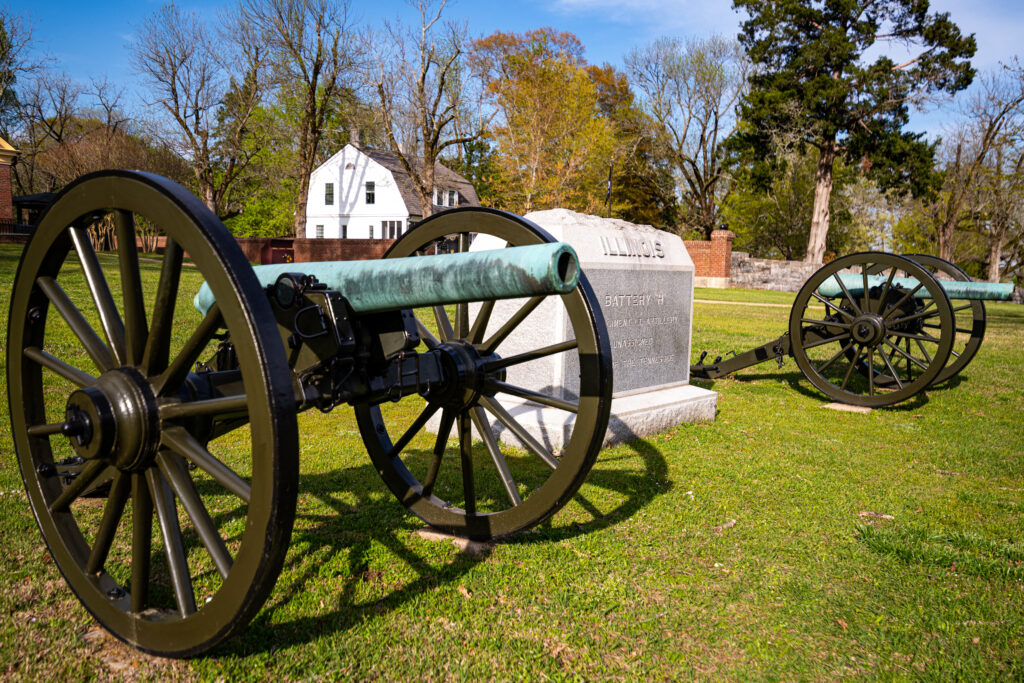
The name Shiloh means “place of peace,” yet it was once the site of one of the fiercest battles ever fought on American soil. In April 1862, the forests and fields here trembled under the weight of 100,000 soldiers — Union and Confederate — whose clash reshaped the course of the Civil War. Today, Shiloh National Military Park stands as a sanctuary of remembrance, where the voices of history murmur through oak groves and over rolling meadows.
Walking the quiet trails, you feel the past pressing close. Cannons rest solemnly beside wildflowers, and the Shiloh Church, once shattered by gunfire, stands rebuilt as a symbol of healing. The National Cemetery, shaded by magnolias, carries names that speak to both tragedy and endurance.
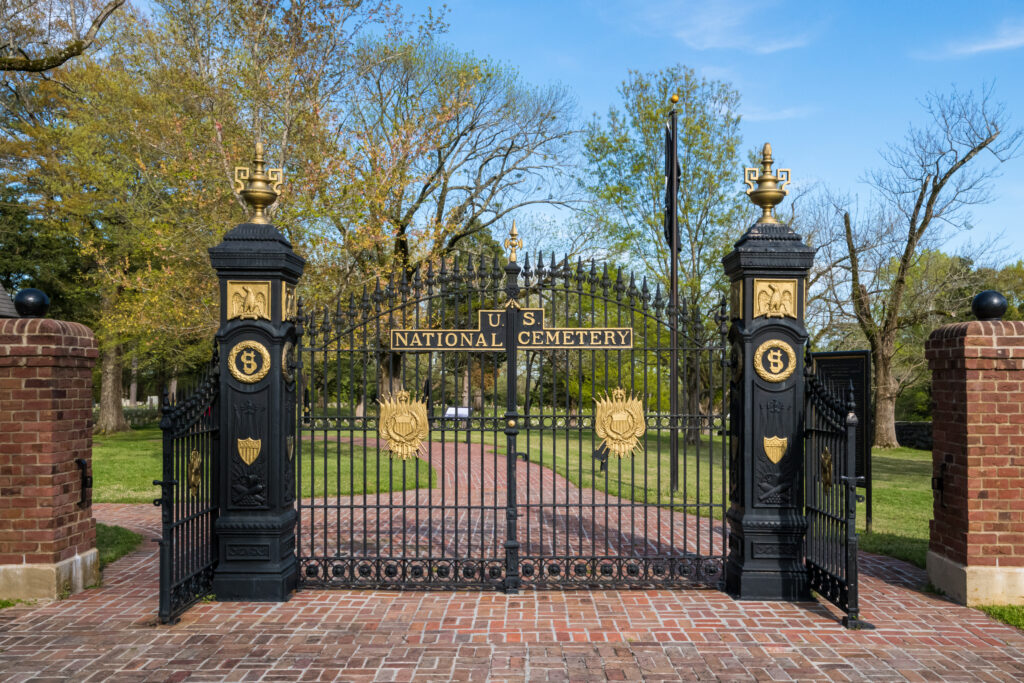
Yet Shiloh is not only a place of sorrow. It is a testament to renewal — a landscape reclaimed by beauty. The nearby Tennessee River flows with steady grace, and the air carries the scent of pine and rain. Visitors come to reflect, to learn, and to find that elusive peace that gives Shiloh its name. At sunset, when the last light touches the river’s edge, silence falls — and it feels sacred.
Dyersburg: Where the River Meets the Fields

In the far northwest corner of Tennessee, where the Forked Deer River winds lazily toward the Mississippi, sits Dyersburg — a town of fertile fields, warm hearts, and timeless rhythms. Here, the land breathes agriculture and river life in equal measure; the soil is rich, the air thick with the scent of honeysuckle, and the sunsets paint the horizon in gold and rose.
Founded in the early 19th century as a river port, Dyersburg grew on trade, timber, and tenacity. Today, its downtown holds echoes of that industrious spirit — red-brick façades, antique stores, and family-run cafés where conversation flows as easily as sweet tea. The Dyer County Courthouse, with its elegant columns, stands as a quiet reminder of civic pride and small-town dignity.
Beyond town, the Mississippi River defines the western boundary — vast, powerful, and eternal. It is a place for watching herons skim the surface, for fishing from shaded banks, for feeling the pull of history in the current. The nearby Reelfoot Lake, born from an earthquake in 1811, is a marvel of cypress trees and mirrored waters — one of the South’s most hauntingly beautiful natural wonders.
Dyersburg is a place of rhythm and roots — the kind of town that moves at the pace of the seasons and reminds you that life’s truest wealth is found in simplicity.
Savannah: Grace on the Tennessee River
Set along a gentle bend in the Tennessee River, the town of Savannah is one of the state’s hidden gems — a place where Southern grace meets frontier endurance. Its streets are lined with stately homes, many of them antebellum survivors, shaded by oaks that have witnessed centuries of change.
The Cherry Mansion, perched on the riverbank, served as General Ulysses S. Grant’s headquarters before the Battle of Shiloh. Today, it stands as both museum and monument — a reminder that even in times of turmoil, life and leadership persist. The river, ever-constant, carried supplies and hope then, just as it now carries light and reflection through town.
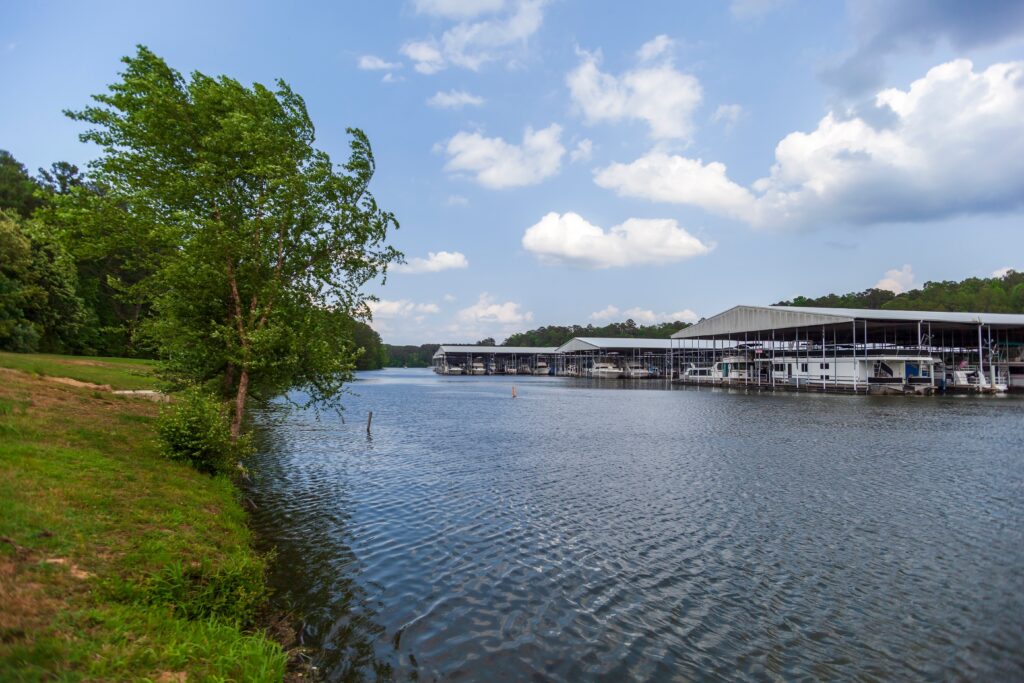
Modern Savannah is a haven for travelers seeking quiet beauty. Pickwick Landing State Park, just downstream, offers serene waters perfect for boating, swimming, or simply watching the world drift by. The Historic Downtown Square hums softly with small-town vitality — boutiques, bakeries, and a sense of genuine welcome.
Savannah captures something quintessential about Tennessee: the balance between strength and serenity, history and renewal. In the hush of the evening, when the river mirrors the first stars, you understand why so many who visit here never quite forget it.
Sewanee: The Mountain of the Soul
High atop the Cumberland Plateau, surrounded by mist, pines, and ancient stone, lies Sewanee — home to the University of the South and one of Tennessee’s most ethereal places. Locals often say, “It’s always cooler up on the Mountain,” and they mean it in every sense: the temperature, the intellect, and the atmosphere of quiet reverence that infuses this academic sanctuary.

Founded in 1857, the university’s Gothic architecture — moss-covered towers, ivy-clad walls, and stained-glass chapels — evokes Oxford and Cambridge, yet Sewanee’s soul is distinctly Southern. The All Saints’ Chapel, with its soaring vaults and luminous windows, is the spiritual heart of campus, while the surrounding Domain — 13,000 acres of forests, trails, and limestone bluffs — invites contemplation and exploration.
From Morgan’s Steep, the view stretches endlessly across the valley — a panorama that humbles and uplifts in equal measure. Writers, poets, and thinkers have long been drawn here, finding inspiration in the mountain’s serene isolation. It is a place of conversation and solitude, of tradition and discovery.
At dusk, when fog curls through the trees and the chapel bells toll softly across the hills, Sewanee feels almost otherworldly — a haven for the mind, and a refuge for the spirit.
Jonesborough: The Oldest Town, The Eternal Story
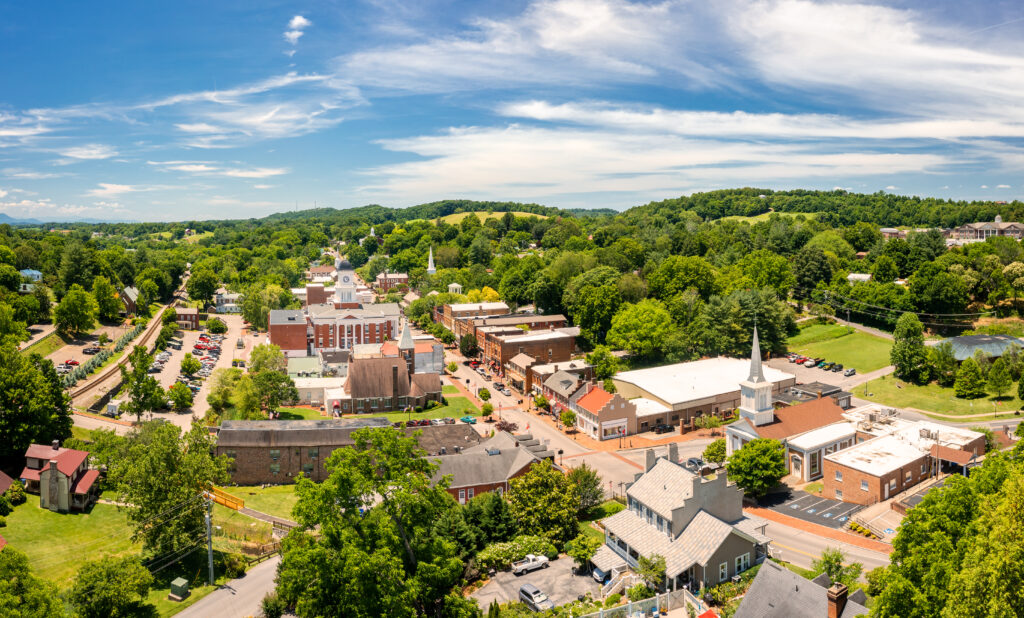
Tennessee’s oldest town, Jonesborough, feels as if time itself has chosen to slow here — to linger among the brick sidewalks, the white steeples, and the voices that have filled these hills for over two centuries. Founded in 1779, it predates the state itself, a settlement of pioneers, preachers, and storytellers who carved a community from the wilderness.
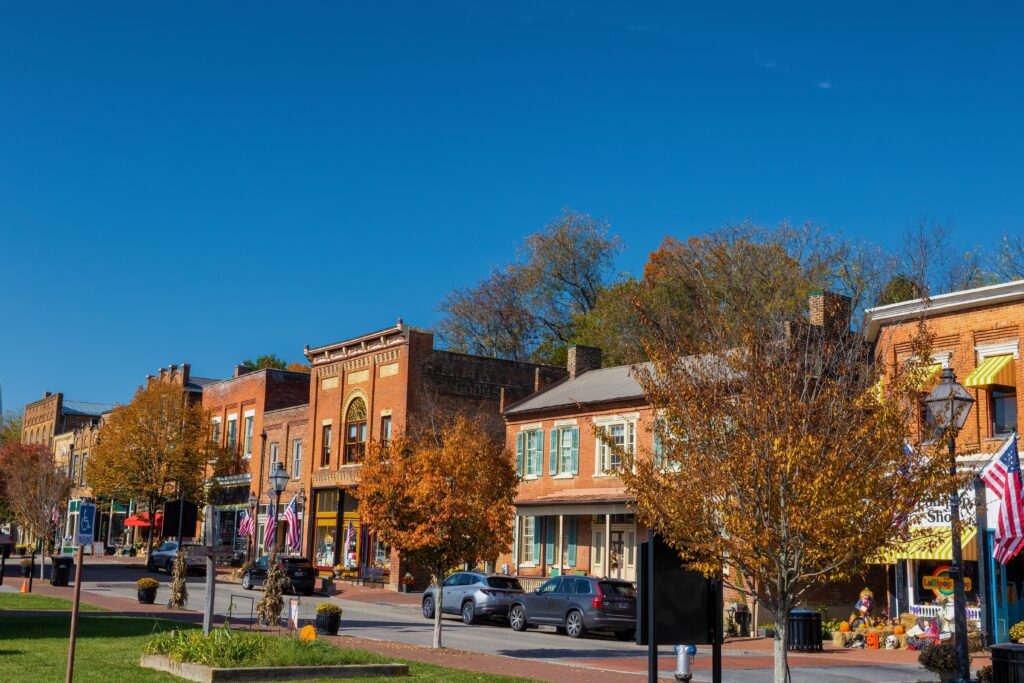
Today, Jonesborough wears its history with grace. The Main Street Historic District, lined with 18th- and 19th-century architecture, is a living museum, yet far from static. Its shops brim with crafts, books, and antiques, while cafés spill out onto porches draped in hanging ferns. But what truly defines the town is its devotion to the spoken word.
Every autumn, the National Storytelling Festival transforms Jonesborough into a stage beneath the open sky. Thousands gather to hear tales from Appalachia and beyond — stories funny, tragic, and timeless, told with the rhythm and warmth that only this region can conjure. In those moments, as laughter and silence ripple through the crowd, you feel Tennessee’s spirit distilled to its essence: resilient, lyrical, alive with memory.
Jonesborough is not just a town — it is an echo, a voice, and a reminder that stories are how people endure.
Greeneville: Where History Breathes with the Mountains

Cradled in the rolling foothills of the Appalachians, Greeneville is a place where American history still feels tangible — not preserved behind glass, but alive in the cobblestones and oak-lined streets. Founded in 1783 and named after Revolutionary War hero Nathanael Greene, it became home to Andrew Johnson, the 17th president of the United States, whose modest tailor shop still stands downtown as part of a National Historic Site.

Yet Greeneville is no mere relic of the past. Its historic district hums with local art, farm markets, and community pride. The General Morgan Inn, a stately 1884 hotel, anchors the town square, while nearby Tusculum University, the oldest college in Tennessee, adds intellectual warmth and youthful rhythm to the city’s stately calm.
Around the edges, the Cherokee National Forest beckons with trails, waterfalls, and the crisp scent of pine. Greeneville’s proximity to wilderness gives it a kind of quiet majesty — a balance between culture and nature, past and present.
Standing on a hill at sunset, watching light soften over the Nolichucky River Valley, one understands why Greeneville endures. It carries history not as a burden, but as a living inheritance — a gentle reminder that leadership, humility, and landscape can coexist in harmony.
Gatlinburg & the Great Smoky Mountains: Where the Clouds Touch the Soul

Few places capture Tennessee’s essence more completely than Gatlinburg, gateway to the Great Smoky Mountains National Park. Here, nature and nostalgia meet in a swirl of mist, wood smoke, and wonder. The mountains rise like a hymn — blue-gray ridges fading into the horizon, alive with whispers of wind, waterfalls, and ancient forests.

The park itself is a sanctuary of life. Its trails — from the cascading Laurel Falls to the panoramic Clingmans Dome — reveal an ever-changing world of light and leaf. In spring, wildflowers blanket the valleys; in autumn, gold and crimson set the hills aflame. Every step carries the scent of moss and rain, every overlook the hush of timelessness.
Down below, Gatlinburg glows with a different magic. Its rustic lodges, glass artisans, and mountain eateries hum with warmth and laughter. The SkyLift Park and Ober Mountain offer sweeping views, while the Arts & Crafts Community preserves Appalachian skill and storytelling in every handmade piece.
The Smokies remind all who wander here that beauty is not just seen — it is felt, deep and enduring, in the silence between the mountains.
Pigeon Forge: The Heartbeat of Appalachian Joy

Just a few miles north of Gatlinburg, Pigeon Forge turns the quiet majesty of the mountains into pure joy — a place where family, faith, and music find expression in celebration. This is Dolly Parton’s country, and her spirit infuses every corner — from the laughter of Dollywood to the harmonies of gospel shows that echo across the valley.
Dollywood, more than a theme park, is a love letter to Tennessee itself: its crafts, its people, its music. Steam engines roll through mountain pines, artisans weave baskets and blow glass, and country melodies fill the air like sunlight through trees.

Beyond the park, Pigeon Forge is alive with entertainment and warmth — dinner theaters, car museums, and cozy cabins perched along wooded hillsides. Yet despite its energy, the town retains sincerity; its joy feels rooted, never hollow. In the distance, the Smokies loom softly, grounding all the lights and laughter in something eternal.
Here, Tennessee’s essence shines through — in melody, in family, and in the enduring belief that happiness, like the mountains, should be shared.
Graceland — The Home Where a Legend Became Eternal
Graceland is far more than a mansion. It is a cultural landmark, a shrine to American music, and a place where the personal and iconic merge into a single, unforgettable experience. Set along a busy boulevard in South Memphis, the white-columned house rises behind its famous musical gates, modest in size yet immense in symbolism. It is here that Elvis Presley — the boy from Tupelo who became the most recognizable performer on Earth — built his sanctuary, raised his family, and lived out the whirlwind of fame that defined an era.

Visitors cross the threshold not simply to see a home, but to step into a preserved moment in time. The rooms reflect Elvis’s taste, enthusiasm, and boundless creativity: the Jungle Room, wrapped in deep green shag and Polynesian décor; the TV Room, bold in yellow and blue, where three screens glow in tribute to late-night channel-hopping; the Music Room, framed by stained glass, where Elvis played gospel tunes for friends long after midnight. Each space echoes with his presence — his laughter, his energy, the duality of a man both extraordinary and achingly human.

Outside, the grounds hold stories of family and devotion. The Meditation Garden, where Elvis rests beside his parents and daughter, is serene and surprisingly intimate. Fans from every corner of the world stand quietly here, leaving flowers, notes, and offerings that span languages and generations. The air feels heavy with reverence, yet light with the joy his music continues to inspire.

Museums across the street expand the experience with artifacts, costumes, cars, and airplanes, revealing the scale of Elvis’s impact on global culture. Yet nothing compares to the simple act of walking through the home he loved. Graceland is a journey into memory, myth, and music — a place where the King still feels profoundly alive.

